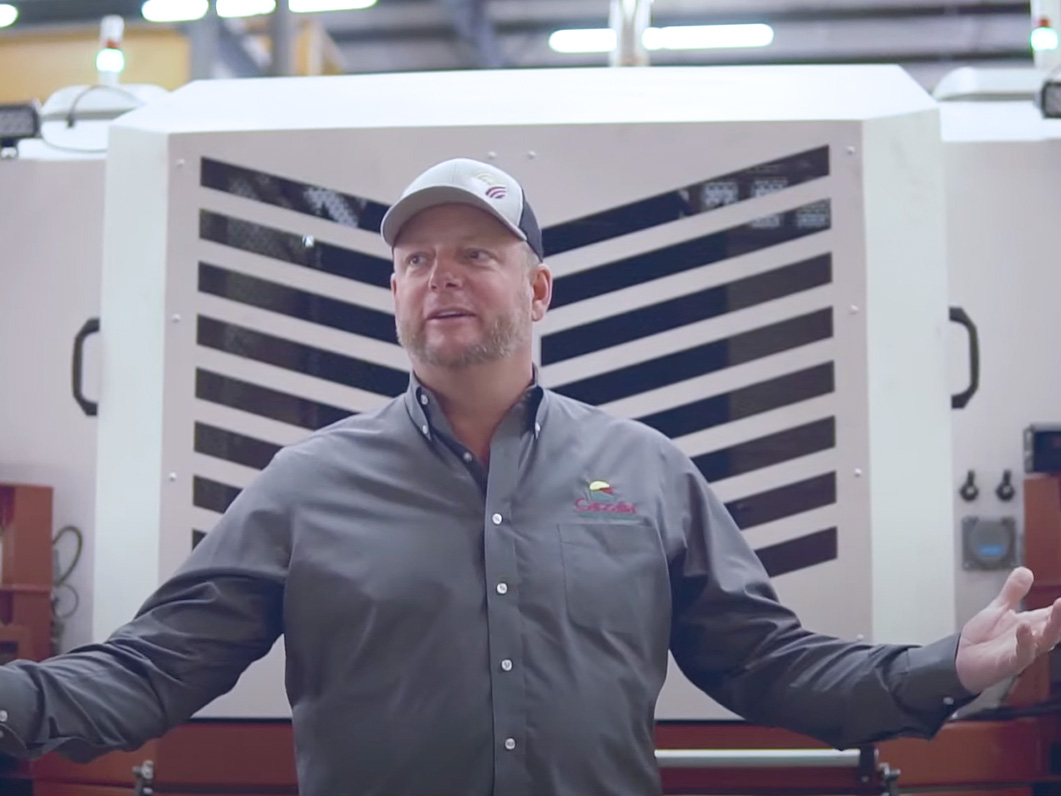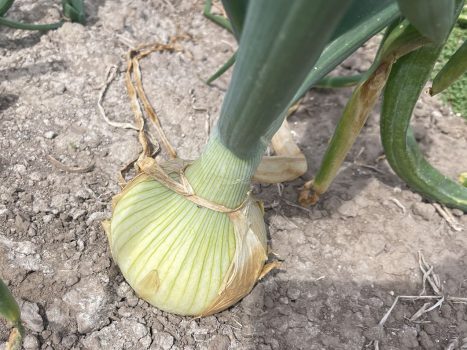Featured image: Screenshot from Carbon Robotics YouTube interview with James Johnson with Carzalia Valley Produce. YouTube video embedded below.
For two seasons, James Johnson of Carzalia Valley Produce tested Carbon Robotics’ automated weeder in his Columbus, NM, onion fields, and recently James said the equipment’s consistency can be quantified by his tripling organic acreage this season.
“I was beta testing the technology for the first two years,” he said on March 3. Now it’s “year three, the first year using the commercial implement version.” James, who also has fields in Mexico, said he’s using the weeder only in his U.S. fields at this time.
In explaining the automated laserweeding operation, James said, “I have not applied any herbicide to the fall-seeded onions, and we’ve been able to control 100 percent of the weeds with the laser, and a couple of light hand weeding passes.”
He noted he’s “averaging about two acres per hour in moderate weed pressure” and went on to say, “I have started weeding spring-seeded organic with it, and I am super pleased so far.”
And he added, “We are doing some replicated trials this season with New Mexico State University that will include only laserweeder; post-emergent plus pre-emerge herbicide plus laserweeder; pre-emerge plus laser; herbicide only; and a control to see what we are doing. We hypothesize that we lose a considerable amount of yield to herbicide damage.”
At its website, https://carbonrobotics.com/ , Seattle-based Carbon Robotics describes its laserweeding product thus: “Weed control is one of farming’s biggest headaches. By leveraging artificial Intelligence and laser technology, Carbon Robotics delivers chemical-free, no-till, weed control for specialty crops. Our hi-resolutions cameras feed imagery in real time to an onboard supercomputer that runs computer vision models to identify crops and weeds. High-powered lasers then kill weeds at the meristem — without harming valuable crops. Laserweeding works day or night, in all weather conditions. It’s a high-precision solution that improves crop yield and reduces overall costs associated with modern farming. Additionally, laserweeding creates sustainable paths to regenerative and organic farming.”
James said he’s growing all three colors plus sweets in both organic and conventional.
After testing a prototype automated weeder during winter 2020/2021, James pre-ordered two of the robotic units from Carbon Robotics for 2022.
“I beta tested for four months over the winter, so essentially I got to watch the machine progress from a sit to a scoot to a crawl 24/7,” he said that first year.
The Carbon Robotics’ site notes the 2023 Laserweeder Implement can kill up to 200,000 weeds per hour with sub-millimeter accuracy and killing up to 99 percent of seeds. It uses 39x 150W CO2, 10.6 lasers with tracking cameras; is a liftable implement with 20-ft. coverage width; pulls behind row tractors; has 60-84-inch row spacing; PTO or diesel generator power supply; 240 inches wide by 117 inches long by 106 inches high.
View the Carbon Robotics interview with James Johnson below.
For more information about Carbon Robotics, visit their website at https://carbonrobotics.com/



